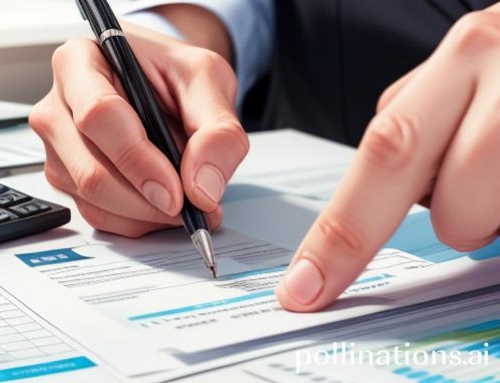Introduction
The invoice-to-payment process, which manages the flow of funds between a business and its suppliers or vendors is a crucial business cycle to effectively and efficiently manage.
But what exactly is this process, and how does it work? In this blog post, we’ll demystify the invoice-to-payment process by breaking down its key components and highlighting its benefits for businesses of all sizes.
Key Takeaways
- The invoice-to-payment process, also known as accounts payable or procure-to-pay, is a series of steps that businesses follow to settle their financial obligations with suppliers and vendors.
- Key steps involved in the invoice-to-payment process includes: creating and submitting invoices, verifying and approving them, establishing remittance date, issuing payments through various methods such as checks or bank transfers while ensuring reconciliation and tracking.
- Streamlining this process can offer several benefits, including improved efficiency and accuracy, enhanced cash flow management, cost savings by reducing overheads for accounts payable departments while ensuring timely payment processing.
Understanding The Invoice-to-Payment Process
The invoice-to-payment process is a crucial aspect of any business operation as it involves managing and paying supplier invoices in a timely and efficient manner.
Definition And Overview
The invoice-to-payment process, also known as accounts payable or procure-to-pay, is a series of steps that businesses follow to settle their financial obligations with suppliers and vendors.
This essential procedure ensures accurate record-keeping while maintaining healthy cash flow management.
At its core, the invoice-to-payment process revolves around managing supplier invoices and streamlining payments in an organized manner. Invoice processing involves tracking every step from receiving to paying invoices while making sure data-entry errors are minimized.
A well-defined invoice-to-payment workflow not only enhances expense management but also helps companies build strong relationships with their vendors through timely payments and effective communication.
Key Steps Involved
The invoice-to-payment process involves several key steps that are essential to ensure timely and accurate payment. Here are the main steps involved:
- Creating and submitting invoices: Suppliers or vendors create invoices to bill customers for their purchases. They submit these invoices to the accounts payable department for processing.
- Verifying and approving invoices: The accounts payable representative reviews each invoice received to verify its accuracy, ensuring that it matches the purchase order and reflects the correct prices and quantities. The invoice is then approved for payment by an authorized person.
- Establishing remittance date: Once the invoice has been approved, a remittance date is set. This is the date on which payment will be made to the supplier or vendor.
- Issuing and processing payments: Payment can be made through various methods such as checks, ACH transfers, or credit cards. The payment is processed once all necessary approvals have been obtained.
- Payment reconciliation: After payment has been issued, it is important to reconcile it with the original invoice to ensure everything matches up correctly.
Overall, streamlining this process can help enhance cash flow management, lower processing time and costs, improve accuracy in bill payment, support regulatory compliance standards, enable early pay discounts, prevent late fees, enhance supplier relationships while avoiding misunderstandings or disputes over payments due dates or amounts owed.
How The Process Works
The process involves creating and submitting invoices, verifying and approving them, as well as issuing and processing payments; read on to learn more about each step in detail.
Creating And Submitting Invoices
Creating and submitting invoices is the first step in the invoice-to-payment process. Here are some key points to keep in mind:
- When creating an invoice, include all relevant details, such as the customer’s name and address, a description of the goods or services provided, the total amount due, and any payment terms or deadlines.
- Some businesses may use templates or software programs to create their invoices, while others may create them manually.
- Once an invoice is created, it should be reviewed for accuracy and completeness before being submitted to the customer for payment.
- Invoices can be submitted via mail, email, or online payment portals, depending on the preferences of both parties.
- It’s important to keep track of when invoices were sent and when they are due for payment to ensure timely processing and avoid late fees.
- Some companies may also require additional documentation or approval processes before paying an invoice.
Verifying And Approving Invoices
In the invoice-to-payment process, verifying and approving invoices is a crucial step in ensuring accurate payment processing. Here are the key steps involved:
- The accounts payable representative reviews the supplier invoice to ensure it meets all requirements, such as proper coding and accuracy of details.
- The invoice is matched against purchase orders and receiving reports to verify that the goods or services were received.
- Any discrepancies found during validation are communicated with the vendor for resolution.
- Once validated, the invoice is approved for payment by an authorized individual.
- Workflow routing ensures that the appropriate individuals review and approve invoices based on set procedures.
- Invoices may also be subject to tiered approval processes depending on their value.
Verifying and approving invoices helps to prevent errors and fraud in payment processing, ensuring that vendors are paid accurately for their goods or services.
Issuing And Processing Payments
Payments are processed once the invoice has been verified and approved. Here are the steps for issuing and processing payments:
- Establish payment terms: Before payment can be issued, both parties need to agree on the terms of payment, such as the amount due, due date, and payment method.
- Schedule payments: The accounts payable team should schedule payments in accordance with the agreed-upon terms, making sure that they have enough funds available.
- Process payments: Once scheduled, payments can be processed using a variety of methods including checks, bank transfers or wire transfers.
- Reconciliation: After payment has been issued, the accounts payable department must reconcile their records to ensure that all invoices match up to payments made.
- Tracking: Tracking payments is important in order to avoid late fees or missed deadlines.
- Receipt processing: Finally, once payment has been received by suppliers or vendors, it must be recorded and filed accordingly in order to maintain accurate records of transactions.
By following these steps for issuing and processing payments as part of the overall invoice-to-payment process, businesses can streamline their financial operations while ensuring that all suppliers are paid accurately and on time.
Benefits Of Streamlining the Process
Streamlining the invoice-to-payment process can offer several benefits, including improved efficiency and accuracy, enhanced cash flow management, and faster payments.
Improved Efficiency And Accuracy
Streamlining the invoice-to-payment process can lead to significant improvements in efficiency and accuracy. By using automated workflows and standardized processes, businesses can reduce the risk of errors and eliminate time-consuming manual tasks.
In addition to increased speed and accuracy, streamlining also helps with cost savings. Unnecessary steps in the process can be eliminated, resulting in reduced overheads for accounts payable departments.
Automation enables invoices to be tracked more easily, enabling managers to identify bottlenecks and inefficiencies quickly.
Overall, by improving efficiency through automation and standardization, businesses can experience enhanced cash flow management, faster payments processing times while reducing costs associated with managing supplier invoices effectively.
Enhanced Cash Flow Management
Streamlining the invoice-to-payment process can significantly improve cash flow management for businesses. By ensuring that invoices are submitted, approved, and paid on time, companies can better predict their cash inflows and outflows.
Additionally, a streamlined payment process ensures that suppliers are paid promptly. This builds trust with vendors and can lead to favorable payment terms in the future.
With an efficient invoice-to-payment process in place, businesses can focus on growth opportunities instead of worrying about managing accounts payable manually.
Faster Payments
One major benefit of streamlining the invoice-to-payment process is faster payments. By optimizing workflow routing and invoice processing procedures, businesses can greatly reduce the time it takes to pay suppliers and vendors.
For example, if a supplier receives payment in a timely manner, they are more likely to prioritize future orders from that customer. Additionally, faster payments can help avoid late fees or interest charges on outstanding invoices, saving both time and money in the long run.
Conclusion
In conclusion, the invoice-to-payment process is an essential component of managing a business’s finances. By streamlining this process, businesses can expect to see improved efficiency and accuracy in their accounting practices.
This includes enhanced cash flow management, faster payments, and better tracking of expenses. By understanding the key steps involved in this process and implementing best practices for managing invoices, businesses can ensure that they are paying their suppliers on time and building strong relationships with vendors.
FAQs:
- What is the invoice-to-payment process?
The invoice-to-payment process refers to the cycle of events that businesses go through in order to send and receive payments for completed services or goods sold. This cycle includes creating invoices, delivering them to clients, tracking payment status and following up on any overdue accounts receivable.
- What are the key steps involved in the invoice-to-payment process?
Key steps involved in the invoice-to-payment process include generating invoices accurately and timely, verifying payment details with customers or vendors, collecting payments via multiple channels such as credit cards online / wire transfers / checks etc., documenting all transactions accurately while ensuring a thorough understanding of company policies related to accounting easy retrieval later if required.
- How can automation help simplify the invoice-to-payment process?
Automation software can assist companies by streamlining repetitive tasks like invoicing or reminders so staff can focus on more strategic work areas which increase overall efficiency . It also helps organizations cut costs associated with manual processing & potential errors while improving accuracy of data capture when paired correctly with digital document management systems designed specifically around this purpose.
- How does effective communication improve the success of the invoicing and payment processes?
Effective communication plays a vital role throughout every stage of invoicing and payment cycles ranging from clear agreements at time-of-sale clarifying roles/responsibilities regarding each party’s obligations; keeping track of progress updates regularly including follow-up notices asking about anticipated remittances helps foster better relationships increasing loyalty over time thus reducing conflicts arising out misunderstandings between supplier/buyer parties down line especially as volumes grow exponentially necessitating increased coordination among teams responsible for handling procurement-related activities within organization efficiently without slowing workflow speeds unnecessarily during execution/processing stages thereby aiding transparency & auditability across workflows where necessary (i.e., audits).
General Facts
- An invoice is a way to bill customers for their purchases.
- Payment can be requested when the customer receives the goods or services.
- Once an invoice is approved, it is put in line for payment.
- Invoice processing involves the tracking, management, and payment of supplier invoices.
- Invoice processing is carried out by the accounts payable department.
- The accounts payable department settles unpaid dues of suppliers or vendors through invoice processing.
- The invoice processing cycle includes receiving a supplier invoice, approving it, establishing a remittance date, and paying it.
- Invoice validation is an important part of invoice management.
- Supplier invoices are reviewed for errors prior to payment.
- The invoice-to-payment process helps with expense management and bookkeeping.
Source URLs
https://start.docuware.com/process-incoming-invoices
https://tipalti.com/invoice-processing/
https://learn.g2.com/invoice-processing
https://www.netsuite.com/portal/resource/articles/accounting/invoice-processing.shtml
https://www.investopedia.com/terms/i/invoice.asp
https://www.bill.com/learning/invoices/invoice-processing





